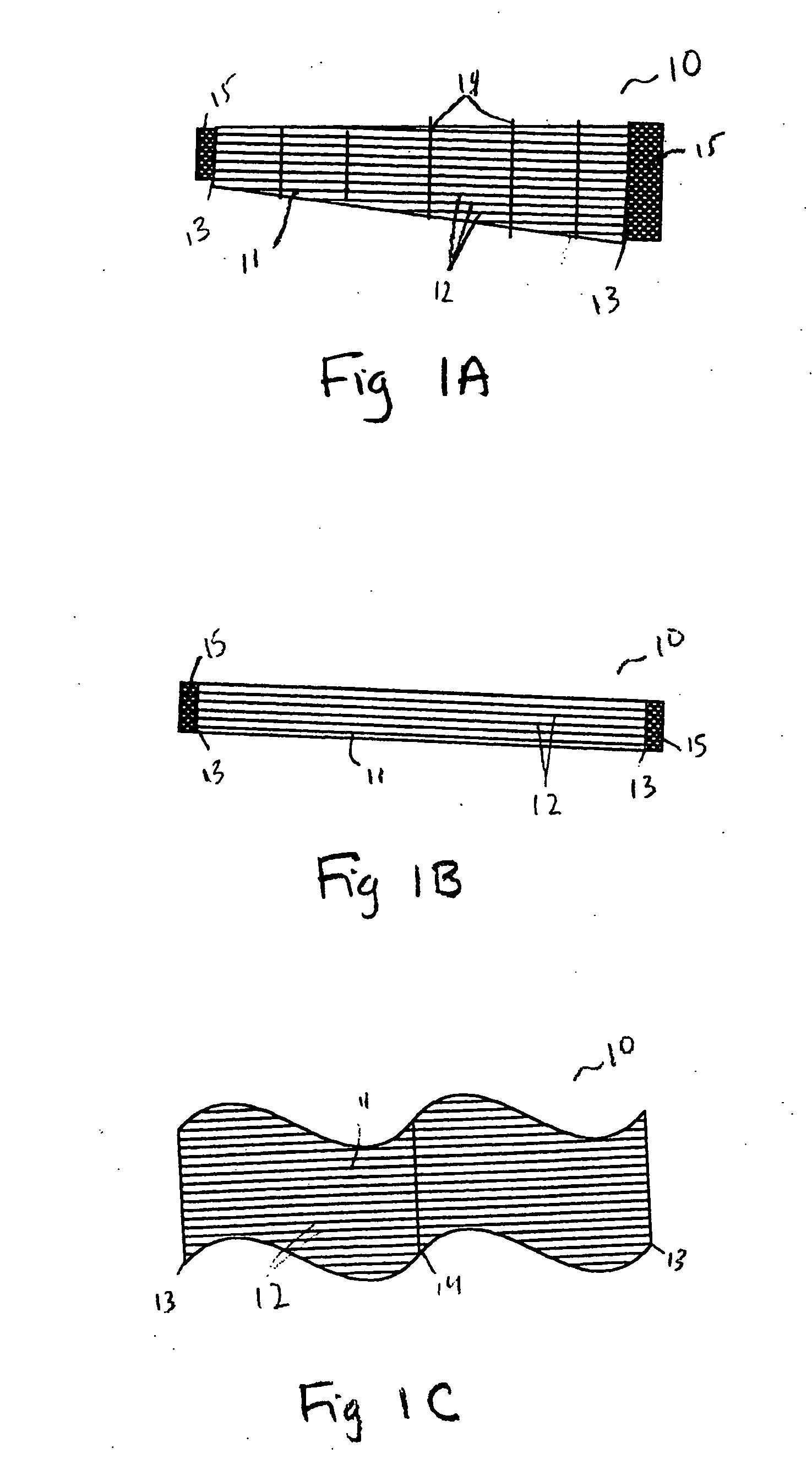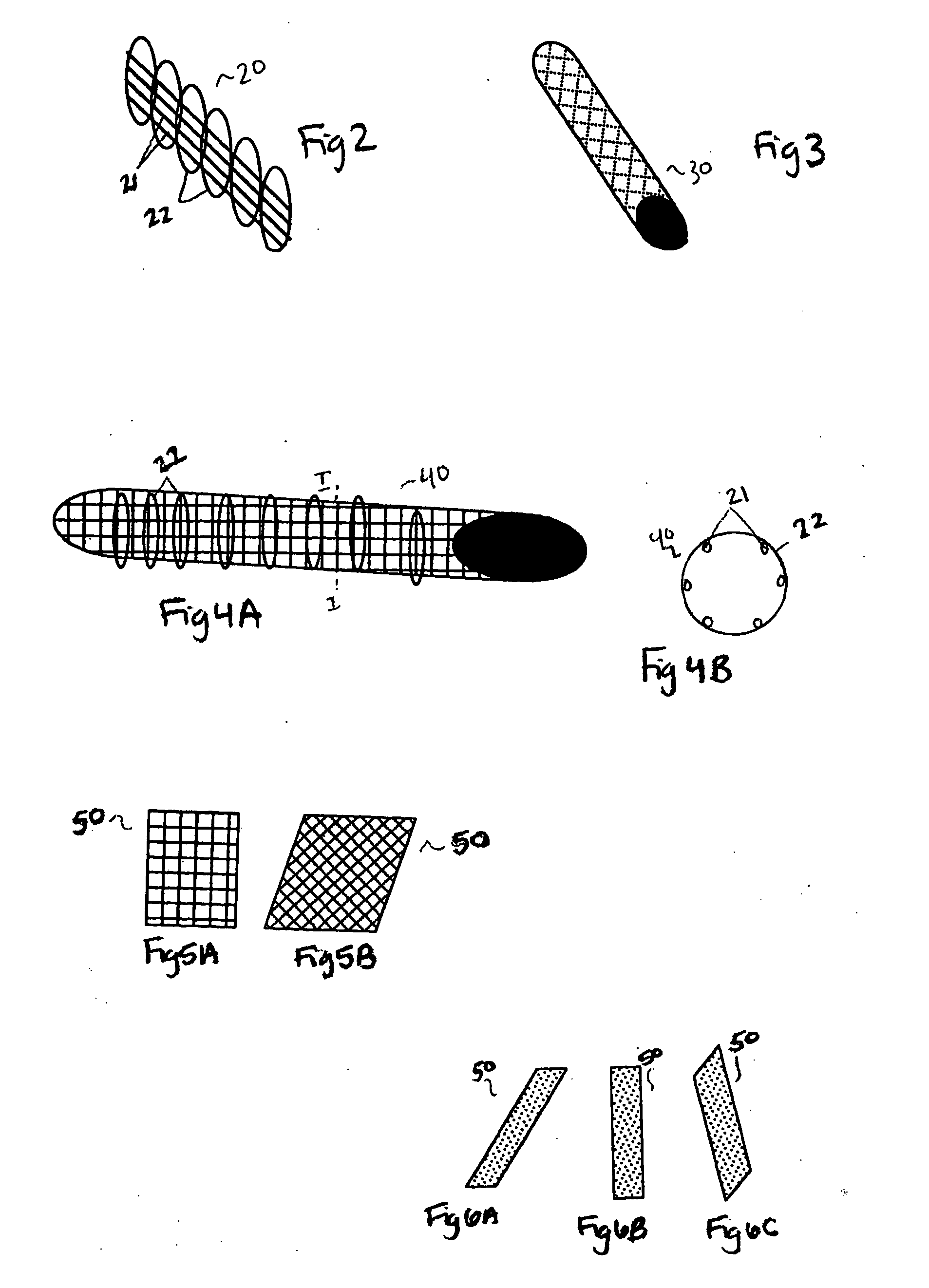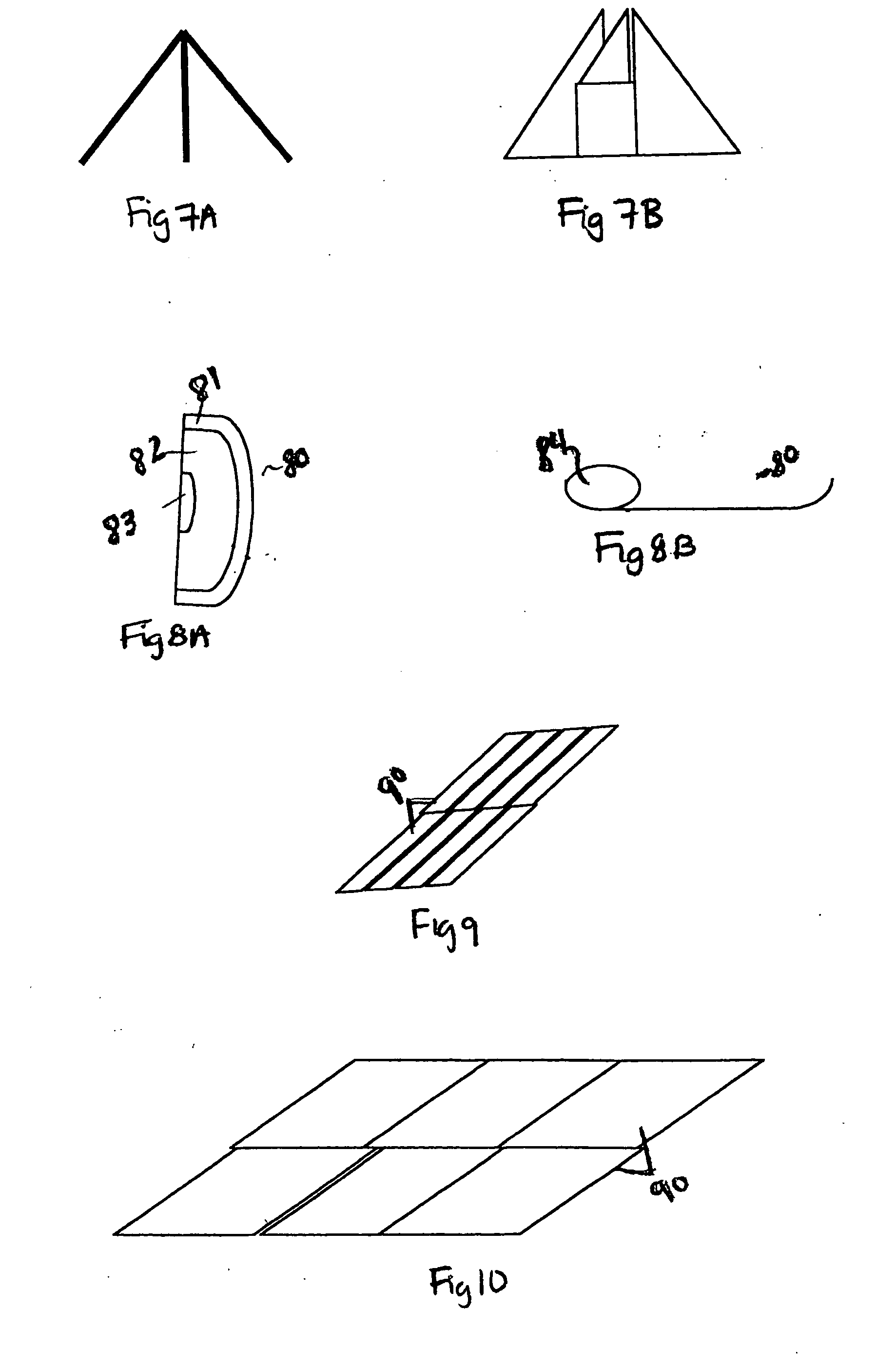Gene therapy methods and cell growth and cell transplant devices for use therein
a technology of cell transplantation and gene therapy, which is applied in the field of biocompatible, implantable replacement body parts, can solve the problems of reduced mobility, stretched, torn or otherwise damaged tendon, and disease and injury of organs to their bodies, and achieve the effect of eliminating any significant immunological response and facilitating the growth of transfected cells
- Summary
- Abstract
- Description
- Claims
- Application Information
AI Technical Summary
Benefits of technology
Problems solved by technology
Method used
Image
Examples
example i
Fabrication of an Artificial Tendon or Ligament Matrix
[0048] A matrix is prepared with shape and size dependent on the intended use for a replacement tendon. Tendons that will be used to attach major bone and muscles together and bear significant mechanical stress and weight are preferably long and broad. FIG. 1A shows the matrix for an artificial tendon or ligament. The tendon 10 may be used where there is a need for the tendon to bear weight. The body 11 of artificial tendon 10 can be trapezoidal in shape, as shown. Body 11 is comprised of longitudinal fibers 12. Longitudinal fibers 12 are secured at their first and second ends with end fibers 13. Because the intended use of the artificial tendon shown in FIG. 1A includes major stresses, multiple cross-connecting fibers 14 are provided within body 11 to add strength and durability. The configuration of two sets of parallel fibers arranged perpendicular to one another, as shown, is a preferred embodiment. Alternate embodiments in...
example ii
Deposit of Cellular Coating on an Artificial Tendon
[0058] Prior to implanting an artificial tendon as described above, tendon or fibroblast cells may be coated on to the bioartificial matrix that comprises the artificial tendon. Cells are first harvested from a patient. To reduce the occurrence of immunological reaction, cells are preferably obtained from the patient who is to receive the artificial tendon. For example, fragments of a tendon disrupted by injury can be surgically removed. After any necessary cell sorting, the tendon or fibroblast cells are placed, together with the matrix, in an appropriate cell culture solution or device. Mechanical action may be employed to ensure the correct orientation of the cells onto the matrix.
[0059] The cells are cultured either in a monolayer culture then transferred to a collagen-imbedded culture, or in a matrix material culture using, for instance, RPMI 1640 medium. Serum albumin, or bovine, or human serum may be added. The culture mat...
example iii
Fabrication of an Artificial Bone
[0063] Due to a variety of internal and external factors, bones may require replacement or augmentation. The present invention provides a fibrous artificial bone matrix that may be invaded by cellular material to recreate or reconstruct natural bone. The addition of cellular material is further described below in Example IV.
[0064] Depending on the intended use of the artificial bone, a variety of materials and shapes are provided. For replacement of long, weight-bearing bones such as the femur, a structure made of a combination of fiber and metal is utilized. As seen in FIG. 2, a structural support 20 is comprised of a set of parallel columns 21. Columns 21 are comprised of strong metal or composite that can support the necessary amount of weight, depending on the patient and ultimate use. A biocompatible metal is preferred, alternatively, a non-compatible material may be coated or treated to prevent adverse reaction once implanted into a patient....
PUM
| Property | Measurement | Unit |
|---|---|---|
| width | aaaaa | aaaaa |
| length | aaaaa | aaaaa |
| outer diameter | aaaaa | aaaaa |
Abstract
Description
Claims
Application Information
 Login to View More
Login to View More - R&D
- Intellectual Property
- Life Sciences
- Materials
- Tech Scout
- Unparalleled Data Quality
- Higher Quality Content
- 60% Fewer Hallucinations
Browse by: Latest US Patents, China's latest patents, Technical Efficacy Thesaurus, Application Domain, Technology Topic, Popular Technical Reports.
© 2025 PatSnap. All rights reserved.Legal|Privacy policy|Modern Slavery Act Transparency Statement|Sitemap|About US| Contact US: help@patsnap.com



